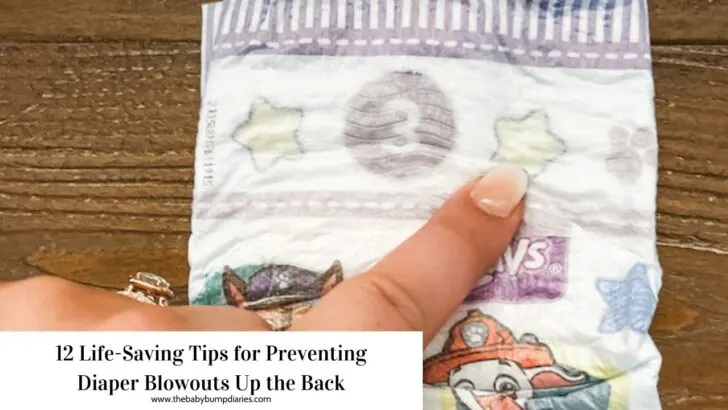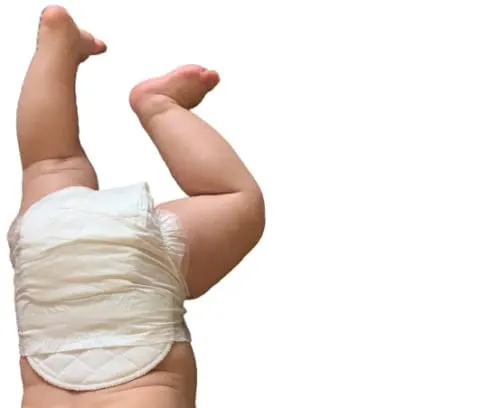Though an inevitable part of parenthood, the velocity at which a small human can evict poop is startling. And if you don’t batten the hatches down properly, a virtual tsunami of poop awaits.
Diaper blowouts can be oh-so-messy and incredibly frustrating. And that’s just when you’re at home. A blowout-on-the-go can be a disaster if you’re not prepared (though one day you will laugh about it. I promise.)
So, what’s the secret to surviving diaper eruptions (aside from a strong sense of humor)?
Here are 12 tips to help prevent diaper blowouts up the back. They’ll never be foolproof but when used together, they might just keep that perfect storm at bay.
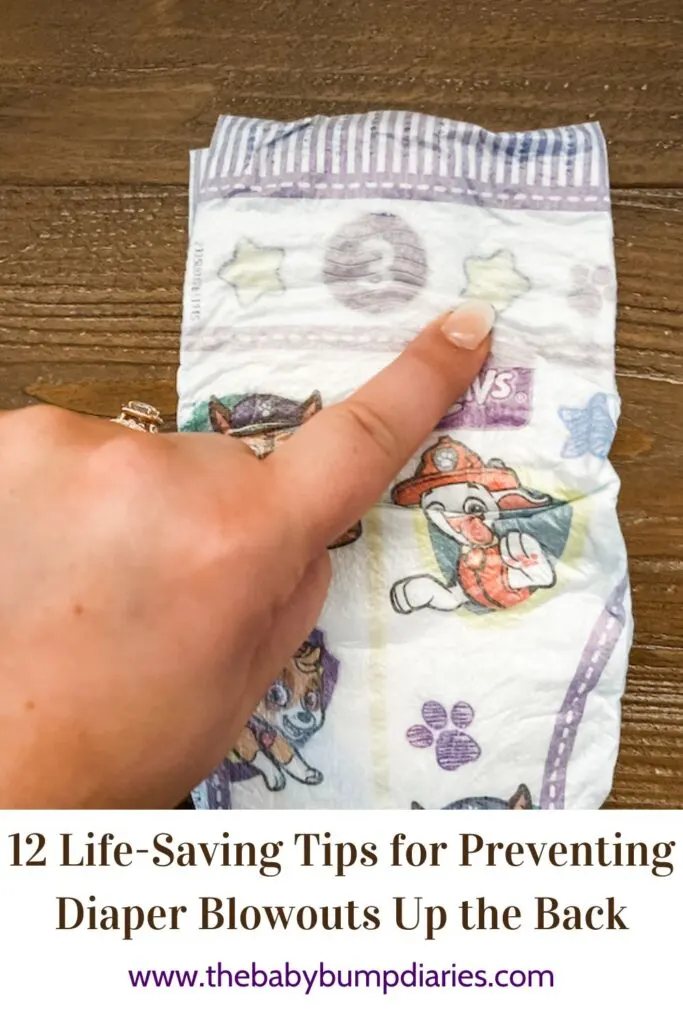
1. Use the correct diaper size.
If your diaper is even a little too big or small, it can cause leaking legs and back blowouts. So, it’s essential to buy the correct size. Disposable diapers are sized by your baby’s weight.
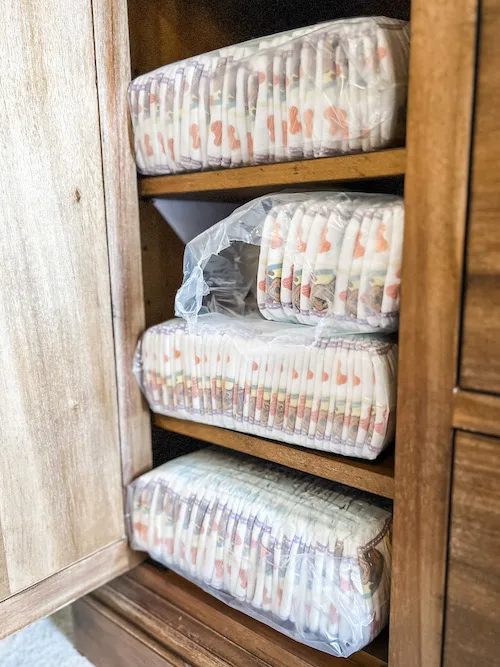
Now that all sounds easy enough. But babies come in all different shapes and sizes and though they may still fit a size by weight, the diaper can start to get small in other areas. For example, it may have gotten too short in the back flap zone which is one of the greatest causes of a poop eruption.
That’s why, aside from the size of your diaper, you need to consider some of the other tips below.
Related: 20 Things To Put In A Diaper Caddy
2. Make sure the diaper is fastened properly.
Fastening a diaper looks easy, but I was always worrying about whether it was too loose or too tight. I’d even worry that if I didn’t leave wiggle room around the waist, it might dig into her tummy if she sat up.
But a diaper that’s not snuggly fastened will allow for gaps – and gaps are the playground of runny poops!
Here’s an easy solution that no one tells you (not even the diaper company’s box!) – there are tab outlines on almost all diaper fronts that indicate where to fasten the diaper.
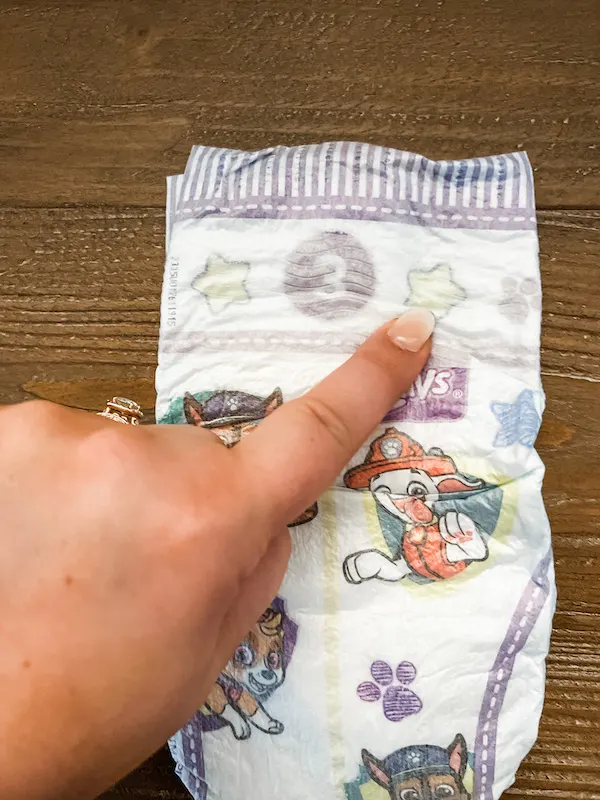
This also shows you whether the diaper is too small, too big, or just right.
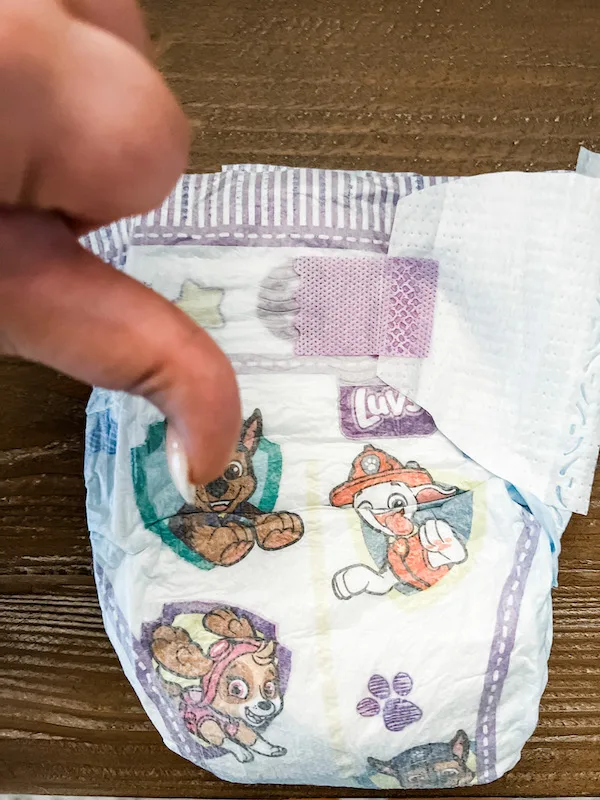
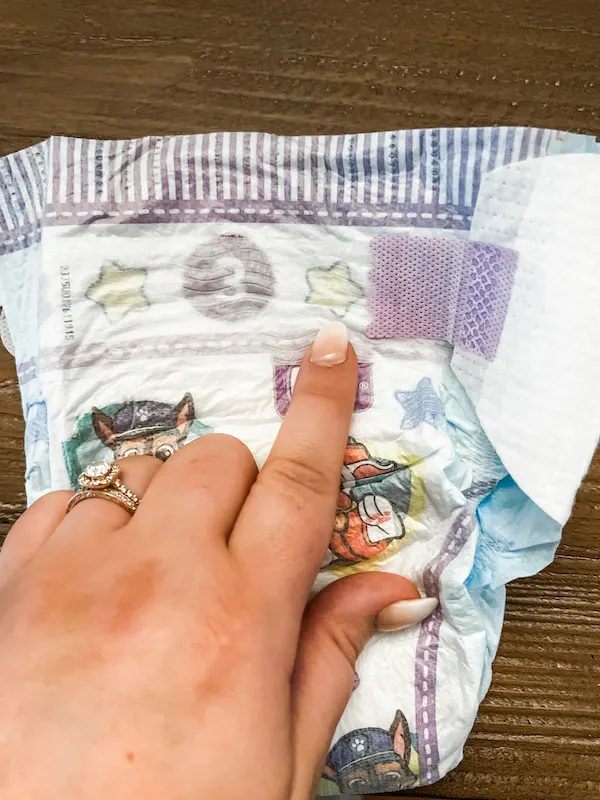
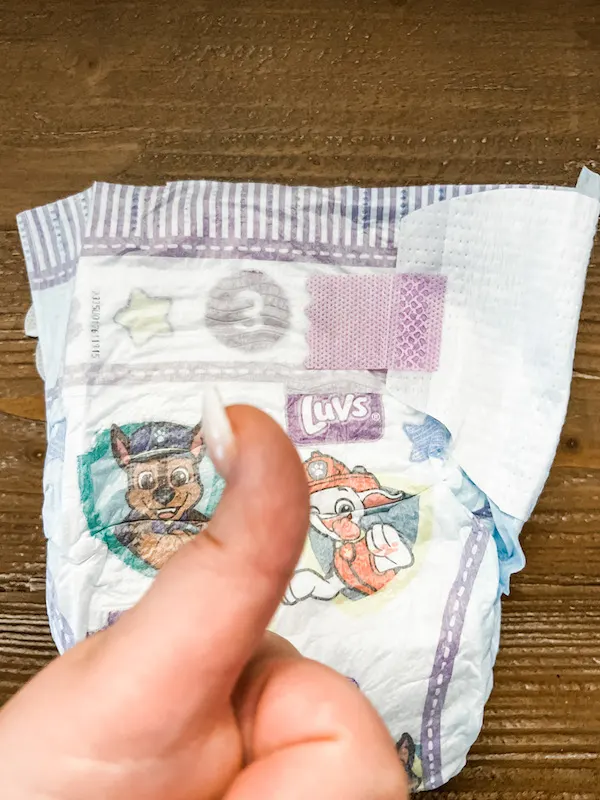
These tab outlines can look like part of the pattern and I know many mamas who have learned this trick years after having their first child. I honestly think it took me two whole years! (Insert forehead slap.)
3. Check the overall fit.
Even if you’ve bought the right size for your child’s weight, and you’ve checked the fastening tabs, you’ll still need to check for a proper diaper fit.
So how should diapers fit?
Diapers are supposed to fit snugly. Not tight. I’ve seen snug defined as what it feels like to wear your favorite stretchy jeans – close-fitting but comfy. I think that’s a wonderful analogy.
The front should sit below the belly button and there should be full coverage across their little butt. The same rule applies to around the legs – snug not tight. You should be able to slide your finger under the waistband and the leg cuffs.
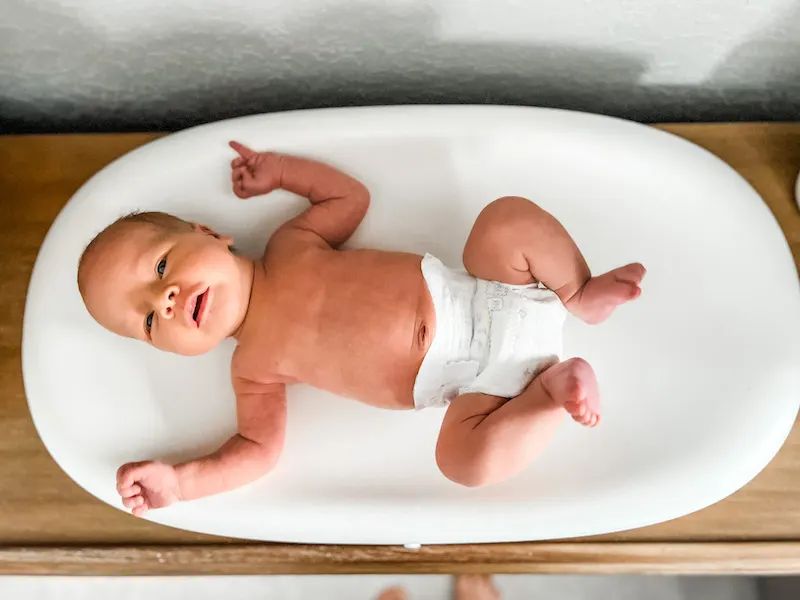
Oh! And let’s not forget those little ruffle parts around the leg cuff. They may not look like much but I guarantee you they are responsible for many a grand eruption. Do not ever mess with the leg ruffles. Leave ‘em out!
Related: How to Get Rid of a Diaper Rash In 24 Hours (It’s Magic!)
4. Double-check the weak spots.
The blowout zones are where there are openings – the waistband and the leg cuffs.
These usually become “weak” due to sizing issues, leg ruffles being tucked in rather than out, or the diaper being wrapped unevenly (as can happen when you’re rushing to get a diaper on!)
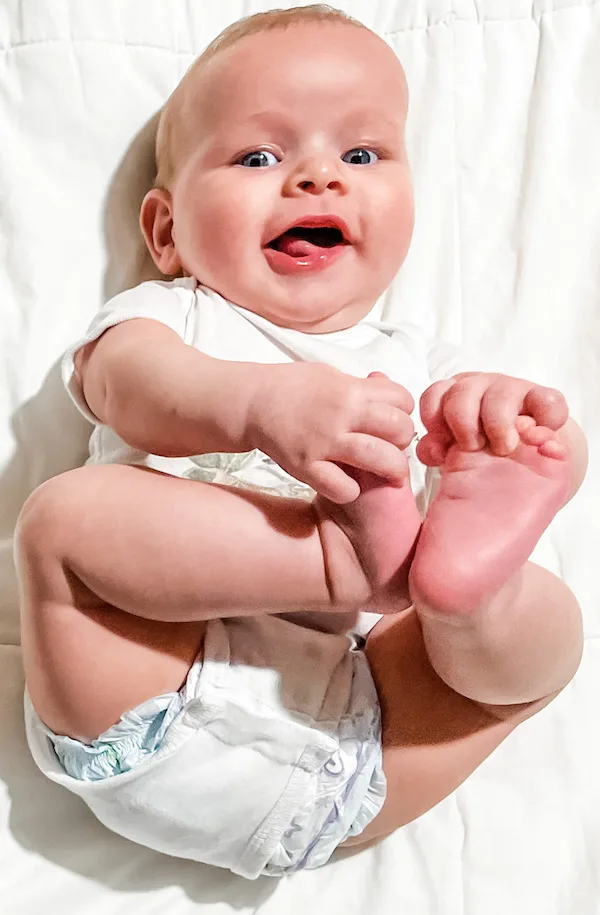
I’ve had a few overnight disasters from changing diapers in the dark and not getting a good look at how unevenly I’d fastened it.
How to tell if a diaper is too big or small? If the waistband is too low or you notice red marks on your baby’s legs, it’s likely time to move up a size. If there’s excess gaping at the leg holes and the waistband, the diaper is too big.
Finally, if your baby is starting to crawl or walk, you might want to consider diapers designed specifically for little “movers.”
5. Change diapers regularly.
This is important for good butt hygiene, but also because diapers can only hold only so much fluid. If your baby already has a very wet diaper and they poop, there won’t be any absorbent space left to hold it.
Even if your baby has just pooped into a clean diaper, get onto that! Baby poop (being the lovely consistency it is) only needs a little movement to shift it in the wrong direction and… you know the rest.
Experts recommend that you change a newborn’s diaper every 2-3 hours, if not more often.
6. Choose the right diaper brand.
This one is easier said than done. It really does take trial and error to find the best diapers for blowouts. Even within brands, you may want to experiment with different types and styles.
What worked for your best friend is not necessarily going to work for you. Every baby seems to have a body that fits some diapers better than others.

I was put off by a particular diaper brand because multiple moms on a chat group lamented their constant blowouts. But we tried them after being given some and fell in love – and never once had a rupture in them. Go figure?!
I swear it truly is “rocket science” this stuff!
I recommend getting small packs of several brands to see which ones you like. That also makes for an amazing baby shower gift!
Related: Do Diapers Expire? 5 Diaper Brands Spill the Tea
7. Try a diaper extender or blowout blocker.
As modern society evolves, so does science! Yes, someone has been giving this problem some thought and developed these cool little products to protect us better from the blowout up the back.
Enter the “diaper extender” and the “blowout blocker.”
The Diaper Extender is a washable, reusable pad that attaches to the back of a disposable diaper and extends the absorbency a little further up the back.
The Blowout Blocker takes this idea up a notch with a washable wrap-around piece of fabric that goes even further up your baby’s back.
8. Use diaper covers.
Here’s a sweet trick for those who use disposable diapers – use a cloth diaper cover over the top to add extra security against escaping poops.
Cloth diaper covers are pre-folded and waterproof and are secured quickly with velcro or snap fasteners. They’re washable, easy to throw in a diaper bag, and a phenomenal idea if your baby has a lot of nighttime blowouts. They also provide peace of mind on car trips.

The Thirsties brand of cloth diaper covers is a popular choice and has some super cute designs.
9. Avoid tight clothing.
Contrary to what it might seem, a tight diaper or tight clothing will not secure an explosive blowout.
In fact, tight clothing – especially pants/leggings – can apply pressure to certain areas of the diaper and actually cause leaks.
Pants should be the same as a good diaper – close-fitting and comfy (snug) at the waist, but never tight.
10. Pay attention to your baby’s mood.
Be aware of your baby’s “general” poop schedule and try to check their diaper (and mood) accordingly.
As every parent quickly finds out, a pooping baby can be noisy but they can also be super stealthy. The stealth ones mean that you often “see” the spread before you even hear or smell it.
But a baby that’s just stealth-pooped generally gets uncomfortable or fussy pretty quickly. Even if you’re certain they haven’t pooped, if they’re starting to fuss, check their diaper for signs of an impending blowout.
11. Be Prepared
Okay, this one won’t prevent a blowout, but it’ll ensure you’ve got all the tools to deal with it swiftly and efficiently – no matter where you are. Like any good boyscout, you’re going to need some essential tools.
Whenever you leave home, make sure you’re equipped with plenty of wet wipes and diapers, a full change of clothing for BOTH baby and yourself, a hardy change mat, some hand sanitizer (in case there’s no soap and water nearby), and a supply of plastic bags or… wet bags!
These washable, waterproof bags are fantastic for wet swimsuits (for kids and adults) and even better for soiled clothing!
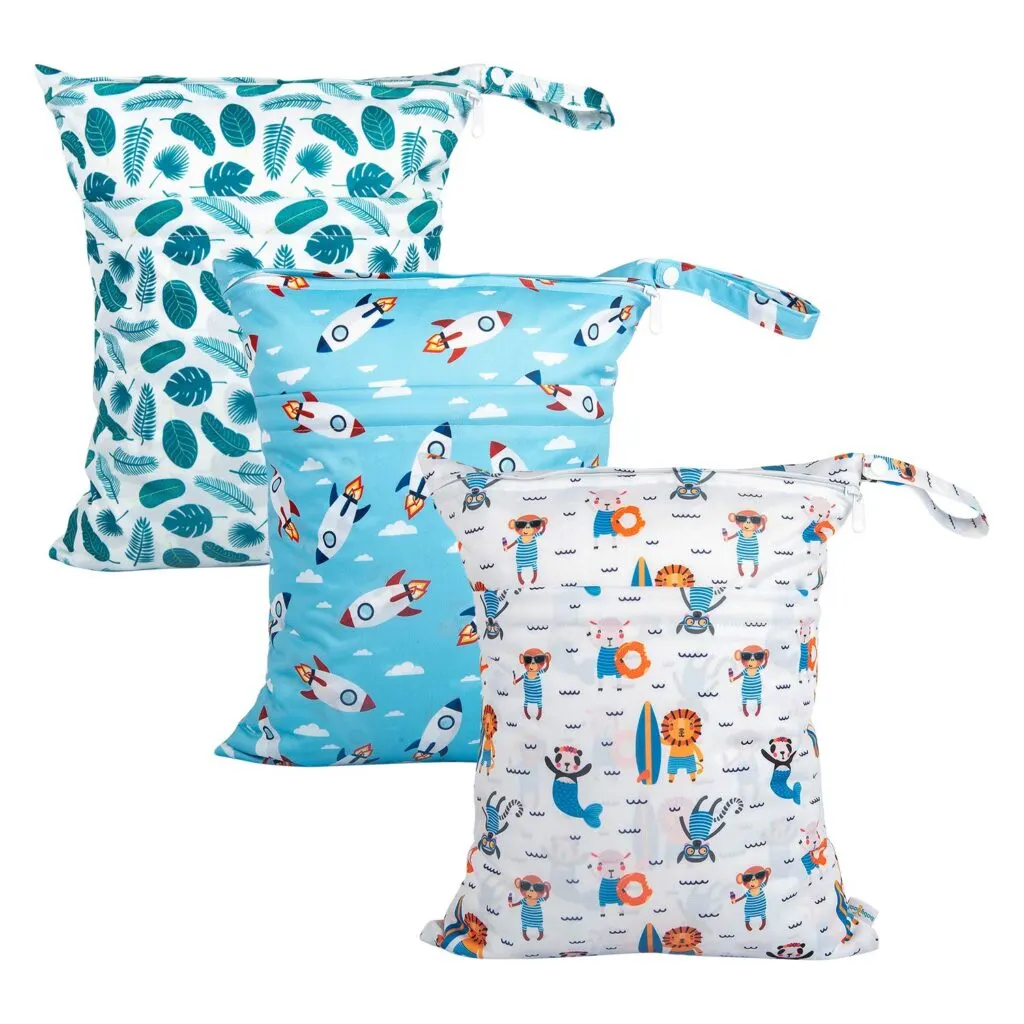
12. Remember… You Have a Newborn
If you have a newborn, they poop VERY frequently – they can apparently average five or more a day. And that poop is a watery consistency, whether they’re breastfed or formula fed.
This means blowouts are very likely to happen no matter what tips and tricks you try.
Having a good laundry solution can go a long way though! At our place, we love the Laundry System by Healthy Baby. It’s safe and non-toxic, approved by the EWG, and is a certified B Corporation!

FAQ: How to Prevent Explosive Diaper Blowouts
What causes diaper blowouts up the back?
The top 3 causes of diaper blowouts up the back are ill-fitting diapers, diapers that haven’t been fastened properly, and diapers that are overfilled.
If a diaper is too small, it won’t be able to contain a baby’s poop adequately. If a diaper is too big, it can create gaps that poop will flow out of. If baby is peeing through diapers like no one’s business, there’s going to be very little room to hold any liquid poop.
How do I stop my baby from pooping up the back?
Ensuring that your little one is wearing the correct size diaper and that you’ve taken the time to fasten it correctly can go a long way in preventing an unforgiving back leak. However, it’s not foolproof.
If you feel you need extra help, a diaper extender or diaper cover can help to block a poop explosion.
Do frequent blowouts mean that a diaper is too small?
Yes, frequent blowouts can definitely mean that a diaper is too small. A diaper that’s too small will not cover your baby’s bottom adequately, and the back coverage will be much lower. Less coverage around the butt also means the absorbency zone is smaller. Finally, it can place pressure on poop in the wrong areas which can push it out through the openings.
Do overnight diapers help with blowouts?
Overnight diapers are known for being extra absorbent, which means they can hold more liquid. Wearing an overnight diaper on car trips, or anywhere you’re concerned about a blowout, may help.
How far up the back should a diaper go?
If a diaper fits your child snugly around their waist and legs, fits nicely below their belly button, and covers their bottom completely, then the back height will be correct.
If you feel you need some added coverage, you can look into diaper extenders – some go to the base of their little shoulder blade!
Is it normal for babies to have blowouts every day?
If your child is a newborn, blowouts basically come with the package. As long as their diaper fits correctly, and their clothing isn’t too tight, the everyday “dam burst” can just be a part of the newborn experience.
What brand of diaper is most absorbent?
Unfortunately, there’s no magical diaper brand across the board. Many parents can’t agree on diaper brands because they have such different experiences with them. That said, many parents currently swear by Coterie, which is arguably the most absorbent diaper brand on the market right now.
“Overnight” diapers are also very absorbent. So you can look into using this type of diaper if you feel your baby needs more absorbency. However, they are generally pricier than standard diapers.
Is there a best position for baby to poop?
A friend of mine swears that her Baby Bjorn bouncer would always make her baby poop, and half the time, they were blowouts up the back.
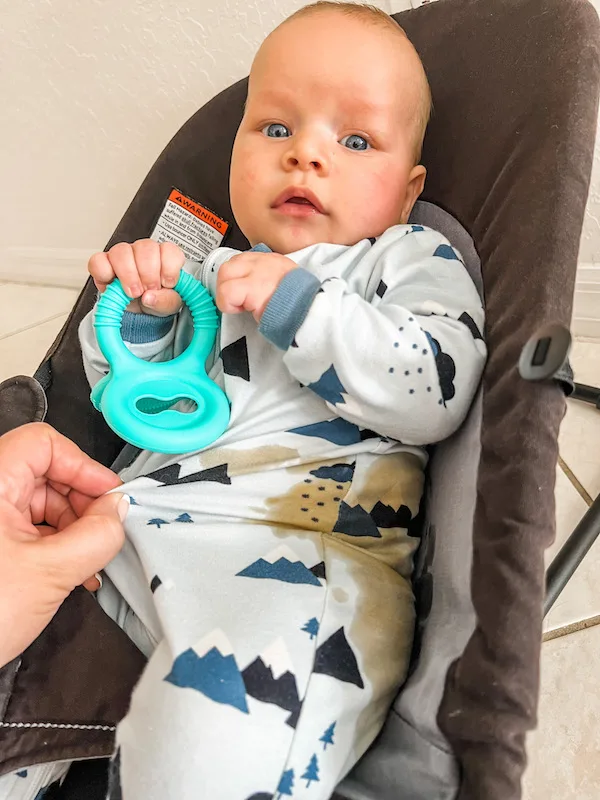
Others swear that car seats bring on blowouts. Though a seated position is traditionally the best way for a human to poo, if a baby has all their weight in their bottom (seated) the pressure behind that runny poop has nowhere else to go but up!
Conclusion
By following the above tips, you can help to prevent diaper blowouts up the back, out the sides, and anything in between. So both you and your baby can stay clean and comfortable – most of the time.
As for those wild projectile poops that happen when their diaper is off – you’re on your own, my friend.
Further Reading: How Long Does It Take for a Diaper to Decompose?
Yasmin is a writer and mother of two young children. She is also the woman behind Two Mama Bears, a blog for parents with babies and toddlers.

